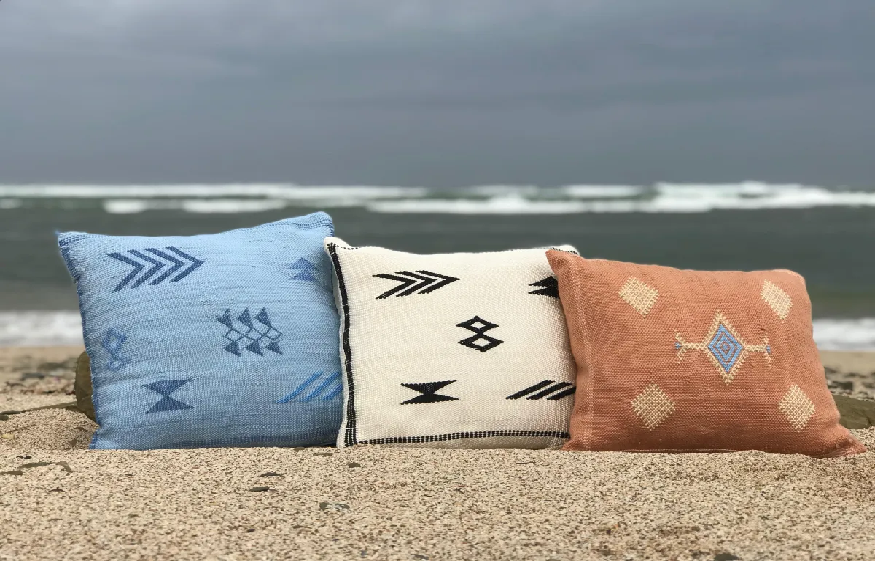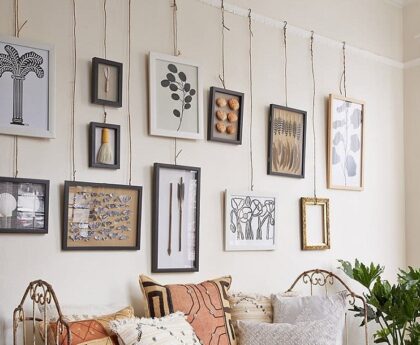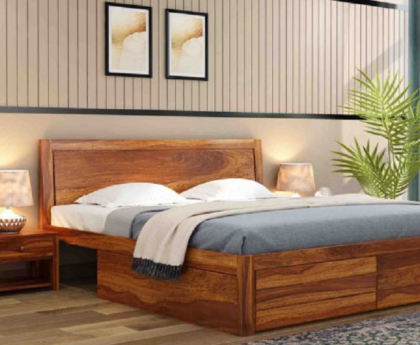A fabric made of vegetable fibers is also why it is also called vegetable silk or cactus silk if the fibers come from Agave instead of Aloe vera. For Moroccan craftsmanship, sabra, vegetable silk, is used for many products: for weaving, textiles, floor mats, cushions, bolsters, bedspreads, sofa throws, costume jewellery, the pretty pompoms that we see everywhere in Morocco…
In this respect and in particular, the beautiful ocher city of Marrakech is world famous in this field of sabra. Widely used for the ornamentation of traditional Moroccan clothing, for all interior decoration products, cushions, bolsters, bedspreads, etc., this very shiny and silky yarn is extracted from the aloe-vera plant or the agave (a kind of cactus native to Mexico very present in Morocco ) to evoke the silk of cactus from which we also remove the fibers or filaments. In all and for all, the fibers of these plants represent the raw material of the vegetable silk which thus bears its name well and which thus gives birth to the fabric which is therefore called the sabra. As the fibers have a triangular section, they thus and then give the fabric this shiny effect which gives it all its charm, they behave like prisms which reflect light. This is precisely what makes the particularity of this 100% natural fabric which has the shine of silk, without being so!
SABRA, CACTUS SILK, VEGETABLE SILK…
The plant used is aloe-vera but also agave. For aloe-vera, the leaves are soaked in water to extract the fibres, this step is called retting. For agave, the leaves are crushed to remove all the green part and thus recover the fibers which will then become white filaments. Retting is the maceration undergone by all textile plants such as hemp, flax and therefore aloe-vera and agave.
When the fibers separate very easily, this first step is sufficient.
The fibers are then, like wool, spun using a loom, worked by hand or embroidered according to the creations and inspirations of the weavers or weavers. This work is artisanal and entirely handmade, both men and women contribute to this art.
These fibers are also dyed by natural and artisanal processes, to obtain colored fibers which will therefore be worked, woven or embroidered to make various works such as carpets, cushion covers, bolster covers, bedspreads, plaids , tablecloths, hangings, jewelry, bags, as we have already said beforehand.
The fabric is also used for all kinds of highly prized, typical and authentic textile products. The sabra or, vegetable silk or therefore, cactus silk, offers a fabric pleasant to the touch and visually speaking very attractive and very chic!
Moreover, it is also a fabric that does not wrinkle, its structure is a little elastic, this is due to the structure of the fibers, it offers a moire appearance, with shiny reflections, but above all and above all it is the silkiness that most characterizes vegetable silk. Unlike real silk, vegetable silk can be machine washed at 40°C for some articles, because others will have to be detached and not washed, indeed, fibers and water do not always go well together! The products from the craftsmanship of trimmings in Morocco are rather considered for interiors, not too much for exteriors.
This fabric offers warm, shimmering colors, the fibers can also be braided, twisted, and thus marvelously adorn slippers, bags, stoles, pompoms, curtain tiebacks, braids, hangings… The sabra is used for multiple things. This very luminous fabric knows how to reflect light particularly well, so it always knows how to be noticed and therefore never goes unnoticed. In the souks of the Kingdom and especially in the souks of Marrakech, it shines on all sides and offers us very beautiful colors.
white sabra cushions
For hangings and curtains, the sabra, generally woven in wide horizontal strips, strips that will be once matte, once shiny, offers a truly varied choice, both in terms of dimensions and colors… This artisanal work sometimes requires hours and hours of labor on traditional looms. Moroccan passementiers are very famous, as such, they supply decorators and great couturiers, creators…
THE SABRA AND MORE PARTICULARLY CACTUS SILK
This type of cactus native to Mexico called agave is also widely grown in Morocco, and again, the fibers are extracted from this plant to make sabra or also called in these cases: cactus silk . Thus in Morocco, no need to breed silkworms, even if the silk is not the same, vegetable silk remains much more respectful of the environment, for a result of
We therefore derive large quantities of fibers from these cacti which grow everywhere and even on arid lands, these fibers therefore produce very good quality vegetable yarns which then shape wonderful articles very popular in Morocco and around the world… crushes the agave leaves to get rid of all the green residues, we then find these whitish colored fibers which will be separated, washed, combed to extract white filaments, which will then be worked and/or tinted with vegetable dyes
Textiles made of agave fibers are biodegradable and are very resistant, we manufacture in particular carpets of sabra, vegetable silk or cactus silk… In Moroccan craftsmanship, in the form of curtains, bedspreads, cushions, large fabrics, hotels very often opt for this unusual decoration that tourists particularly appreciate. Thus, many visitors also wish to decorate their interiors in this way, which is why all these articles are really very popular. Be careful when making your choice, don’t forget that the real sabra is wrinkle-resistant! It is true that in the past, vegetable silk was only made from the fibers of Aloe vera, but today it is not uncommon to find in the manufacture of synthetic materials and in particular viscose coupled with wool or cotton, the real sabra has to be earned and it is important to trust the connoisseurs, at Tribalisteyou will only find items from traditional crafts that respect the know-how of yesteryear.
So as not to be mistaken, we have selected for you very beautiful articles straight out of the workshops of renowned weavers in Marrakech. On our catalog you will discover beautiful vegetal silk rugs, but also cushion and bolster covers, objects that should seduce you. For a typical Moroccan interior decoration, you can trust us! In addition, also know that by buying products from Tribaliste , you contribute not only to fair trade but also, you encourage this craftsmanship which, in Morocco, supports many families. We thus offer sabra cushions and bolsters as well as carpets as below





